The Behavior of Nonlinear Tsunami Waves Running on the Shelf
Abstract
:1. Introduction
2. Formulation of the Problem
3. A Solution to the Problem. Linear Case
4. Solution of the Nonlinear Problem in the Case of a Homogeneous Wave
5. A Solution to the Nonlinear Problem: Turbulent Horizontal Friction Dominates
6. The Solution to the Problem: Nonlinear Friction on the Bottom Dominates
7. Conclusions
- The necessity of studying the set of nonlinear equation solutions of shallow water theory for calculating and predicting tsunami waves is considered. The principle of superposition is not fulfilled for nonlinear equations, and solutions are not unique. This causes the complexity of the mathematical models.
- Nonlinear equations of shallow water theory are derived and discussed. Ultimately, they come down to one equation. It contains the spatial and temporal variations of the water level disturbance, nonlinear accelerations, and two types of friction: (1) horizontal turbulent friction and (2) bottom friction.
- A solution is obtained when turbulent friction dominates over nonlinearity. It describes the attenuation of tsunami waves running along the shelf.
- A solution to the nonlinear problem is found in the case of low friction against the bottom and quasi-homogeneity of the wave along the horizontal. It looks like a switching wave (kink) of a tsunami flooding the shelf and coast.
- Nonlinear solutions to the problem are obtained and analyzed when the horizontal turbulent friction dominates over the bottom friction. They describe solitary waves (solitons) of a tsunami that arise when the nonlinearity and turbulent friction are in balance.
- A nonlinear problem with friction on the bottom has been solved. The resulting tsunami wave has an unusual dipole shape with two poles. A positive rise is adjacent to a negative decrease, with both poles moving together at the same velocity.
Author Contributions
Funding
Institutional Review Board Statement
Informed Consent Statement
Data Availability Statement
Acknowledgments
Conflicts of Interest
References
- Arsen’yev, S.A.; Eppelbaum, L.V. Nonlinear model of coastal flooding by a highly turbulent tsunami. J. Nonlinear Math. Phys. 2021, 28, 436–451. [Google Scholar] [CrossRef]
- Pelinovsky, E.N. Hydrodynamics of Tsunami Waves; Institute of Applied Physics of the Russia Academy of Science: Nizhny Novgorod, Russia, 1996. (In Russian) [Google Scholar]
- Wendt, J.; Oglesby, D.D.; Geist, E.L. Tsunamis and splay fault dynamics. Geophys. Res. Lett. 2009, 36, L15303. [Google Scholar] [CrossRef]
- Levin, B.W.; Nosov, M.A. Physics of Tsunami; Springer: Cham, Switzerland, 2016. [Google Scholar]
- Rabinovich, A.B. Twenty-seven years of progress in the science of meteorological tsunamis following the 1992 Daytona Beach event. Pure Appl. Geophys. 2020, 177, 1193–1230. [Google Scholar] [CrossRef]
- Arsen’yev, S.A.; Rykunov, L.N.; Shelkovnikov, N.K. Nonlinear interactions of tsunami and tides in an ocean. Dokl. Russ. Acad. Sci. 1993, 331, 732–734. [Google Scholar]
- Turcotte, D.L. Fractals and Chaos in Geology and Geophysics; Cambridge University Press: Cambridge, UK, 1992. [Google Scholar]
- Sadovsky, M.A. Some Selected Works. In Geophysics and Physics of Explosion; Nauka: Moscow, Russia, 1999. (In Russian) [Google Scholar]
- Kardashov, V.R.; Eppelbaum, L.V.; Vasilyev, O.V. The role of nonlinear source terms in geophysics. Geophys. Res. Lett. 2000, 27, 2069–2072. [Google Scholar] [CrossRef] [Green Version]
- Eppelbaum, L.V.; Kardashov, V.R. Analysis of strongly nonlinear processes in geophysics. In Proceedings of the Chapman Conference on Exploration Geodynamics, Dunsborough, Australia, 19–24 August 2001; pp. 43–44. [Google Scholar]
- Keilis-Borok, V.; Ismail-Zadeh, A.; Kossobokov, V.; Shebalin, P. Non-linear dynamics of the lithosphere and intermediate-term earthquake prediction. Tectonophysics 2001, 338, 247–260. [Google Scholar] [CrossRef]
- Morra, G.; Yuen, D.A. Role of Korteweg stresses in geodynamics. Geophys. Res. Lett. 2008, 35, L07304. [Google Scholar] [CrossRef]
- Schmedes, J.; Archuleta, R.J.; Lavallèe, D. Correlation of earthquake source parameters inferred from dynamic rupture simulations. J. Geophys. Res. 2010, 115, B03304. [Google Scholar] [CrossRef] [Green Version]
- Kakinuma, T. A Numerical Study on Distant Tsunami Propagation Considering the Strong Nonlinearity and Strong Dispersion of Waves, or the Plate Elasticity and Mantle Fluidity of Earth. Fluids 2022, 7, 150. [Google Scholar] [CrossRef]
- Shuleikin, V.V. Physics of the Sea; Nauka: Moscow, Russia, 1968. (In Russian) [Google Scholar]
- Sretensky, L.N. Theory of Wave Motions of Fluids; Nauka: Moscow, Russia, 1977. (In Russian) [Google Scholar]
- Ablowitz, M.J.; Segur, H. Solitons and Inverse Spectral Transform; SIAM: Philadelphia, PA, USA, 1980. [Google Scholar]
- Dodd, R.K.; Eilbeck, J.C.; Gibbon, J.D.; Morris, H.C. Solitons and Nonlinear Wave Equations; Academic Press: Cambridge, NY, USA, 1988. [Google Scholar]
- Arsen’yev, S.A.; Seleverstov, S.V.; Shelkovnikov, N.K. Giant solitary waves in the ocean and their modeling. Mosc. Univ. Phys. Bull. 1997, 38, 57–59. [Google Scholar]
- Ren, Z.; Liu, H.; Jimenez, C.; Wang, Y. Tsunami resonance and standing waves in the South China Sea. Ocean Eng. 2022, 262, 112323. [Google Scholar] [CrossRef]
- Gao, J.; Ma, X.; Chen, H.; Zang, J.; Dong, G. On hydrodynamic characteristics of transient harbor resonance excited by double solitary waves. Ocean Eng. 2021, 219, 108345. [Google Scholar] [CrossRef]
- Gao, J.; Ji, C.; Gaidai, O.; Liu, Y.; Ma, X. Numerical investigation of transient harbor oscillations induced by N-waves. Coast. Eng. 2017, 125, 119–131. [Google Scholar] [CrossRef]
- Gao, J.; Ma, X.; Dong, G.; Zang, J.; Zhou, X.; Zhou, L. Topographic influences on transient harbor oscillations excited by N-waves. Ocean Eng. 2019, 192, 106548. [Google Scholar] [CrossRef]
- Arsen’yev, S.A. On the theory of long waves on water. Dokl. Russ. Acad. Sci. 1994, 334, 635–638. [Google Scholar]
- Geyer, A. Solitary traveling water waves of moderate amplitude. J. Nonlinear Math. Phys. 2012, 19 (Suppl. S1), 104–115. [Google Scholar] [CrossRef] [Green Version]
- Rajan, G.K.; Bayram, S.; Henderson, D.M. Periodic envelopes of waves over non-uniform depth. Phys. Fluids 2016, 28, 042106. [Google Scholar] [CrossRef]
- Benilov, E.S.; Flanagan, J.D.; Howlin, C.P. Evolution of packets of surface gravity waves over smooth topography. J. Fluid Mech. 2005, 533, 171–181. [Google Scholar] [CrossRef] [Green Version]
- Grimshaw, R.H.J.; Annenkov, S.Y. Water wave packets over variable depth. Stud. Appl. Math. 2011, 126, 409–427. [Google Scholar] [CrossRef]
- Fedorov, A.V.; Melville, W.K. Nonlinear gravity–capillary waves with forcing and dissipation. J. Fluid Mech. 1998, 354, 1–42. [Google Scholar] [CrossRef] [Green Version]
- Arsen’yev, S.A.; Babkin, V.A.; Yu, G.A.; Nikolaevskiy, V.N. Theory of Mesoscale Turbulence. Eddies of the Atmosphere and the Ocean; Regular and Chaotic Dynamics, Institute of Computer Sciences: Moscow, Russia; Izhevsk, Russia, 2010. (In Russian) [Google Scholar]
- Labzovskii, N.A. Non-Periodic Sea Level Fluctuations; Gidrometeoizdat: Saint Petersburg, Russia, 1971. (In Russian) [Google Scholar]
- Arsen’yev, S.A. On the nonlinear equations of long sea waves. Water Resour. 1991, 1, 29–35. (In Russian) [Google Scholar]
- Arsen’yev, S.A.; Shelkovnikov, N.K. Storm Surges as Dissipative Solitons. Mosc. Univ. Phys. Bull. 2013, 68, 483–489. [Google Scholar] [CrossRef]
- Dwight, H.B. Tables of Integrals and Other Mathematical Data; Lan: Saint Petersburg, Russia, 2009. [Google Scholar]
- Landau, L.D.; Lifshits, E.M. Fluid Mechanics; Pergamon Press: Oxford, UK; New York, NY, USA; Tokyo, Japan, 1987. [Google Scholar]
- Whitham, F.R.S. Linear and Nonlinear Waves; John Wiley & Sons: New York, NY, USA; London, UK; Sydney, Australia, 1999. [Google Scholar]
- Lighthill, J. Waves in Fluids; Cambridge University Press: London, UK; New York, NY, USA; Melbourne, Australia, 1978. [Google Scholar]
- Johnson, R.S. Shallow Water Waves on a Viscous Fluid—The Undular Bore. Phys. Fluids 1972, 15, 1693–1699. [Google Scholar] [CrossRef]
- El, G.A.; Grimshaw, R.H.J.; Smyth, N.F. Unsteady undular bores in fully non-linear shallow–water theory. Phys. Fluids 2006, 18, 027104. [Google Scholar] [CrossRef] [Green Version]
- Vinogradova, M.B.; Rudenko, O.B.; Suhorukov, A.P. Theory of Waves; Nauka: Moscow, Russia, 1990. (In Russian) [Google Scholar]
- Gurbatov, S.N.; Rudenko, O.V.; Saichev, A.I. Waves and Structures in Nonlinear Media without Dispersion. Applications to Nonlinear Acoustics; Fizmatlit: Moscow, Russia, 2008. (In Russian) [Google Scholar]
- Tikhonov, N.; Samarsky, A.A. Equations of Mathematical Physics; Moscow University Press: Moscow, Russia, 1999. [Google Scholar]
- Arsen’yev, S.A. On the laws of resistance for purely drift and gradient flows. In Comprehensive Studies of the Northern Caspian; Institute of Water Problems, Academy of Sciences of the USSR: Moscow, Russia; Nauka: Moscow, Russia, 1988. (In Russian) [Google Scholar]
- Kolmogorov, A.N. Equations of turbulent motion of an incompressible fluid. Izv. USSR Acad. Sci. Phys. Ser. 1942, 6, 299–303. (In Russian) [Google Scholar]
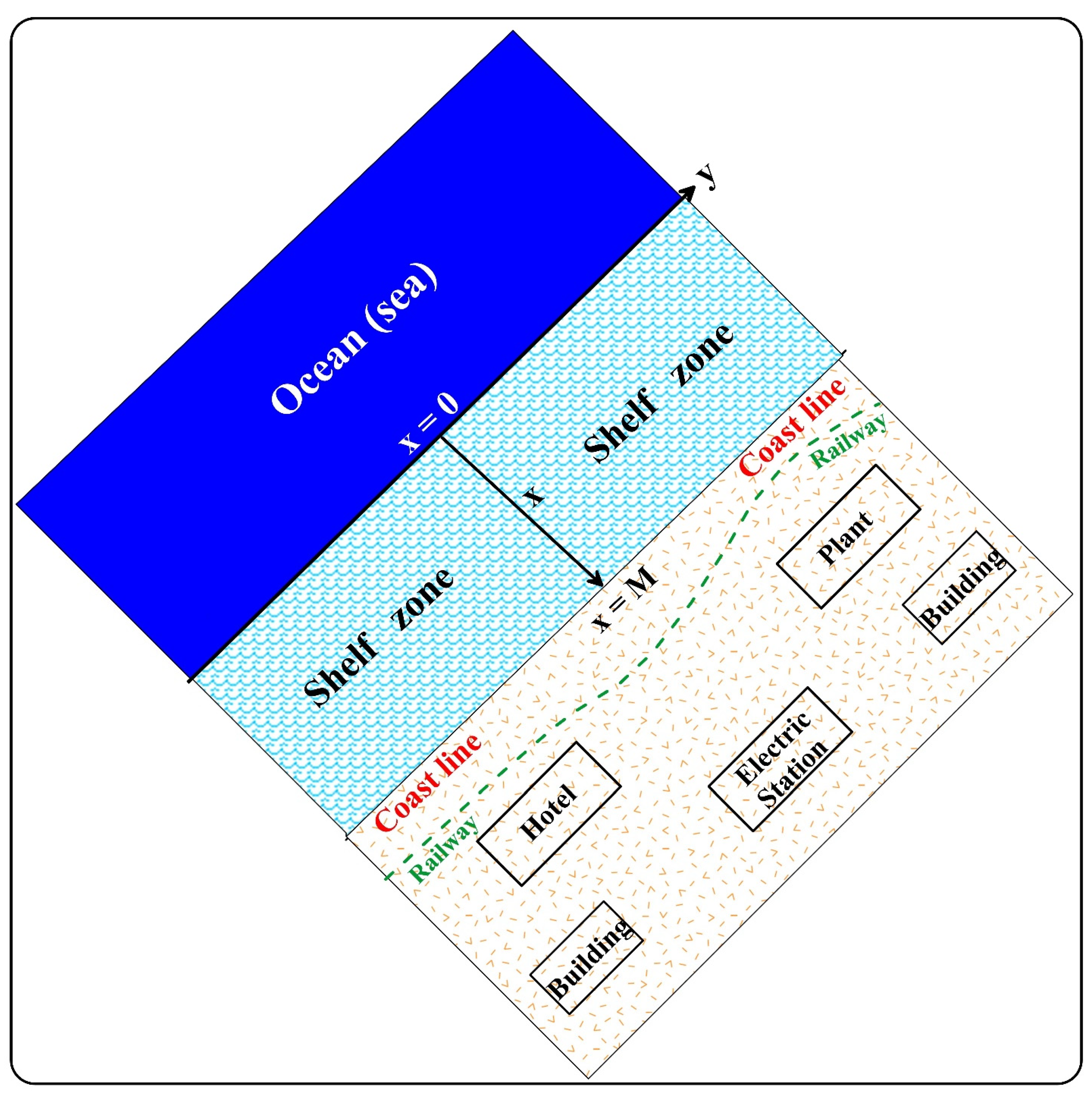
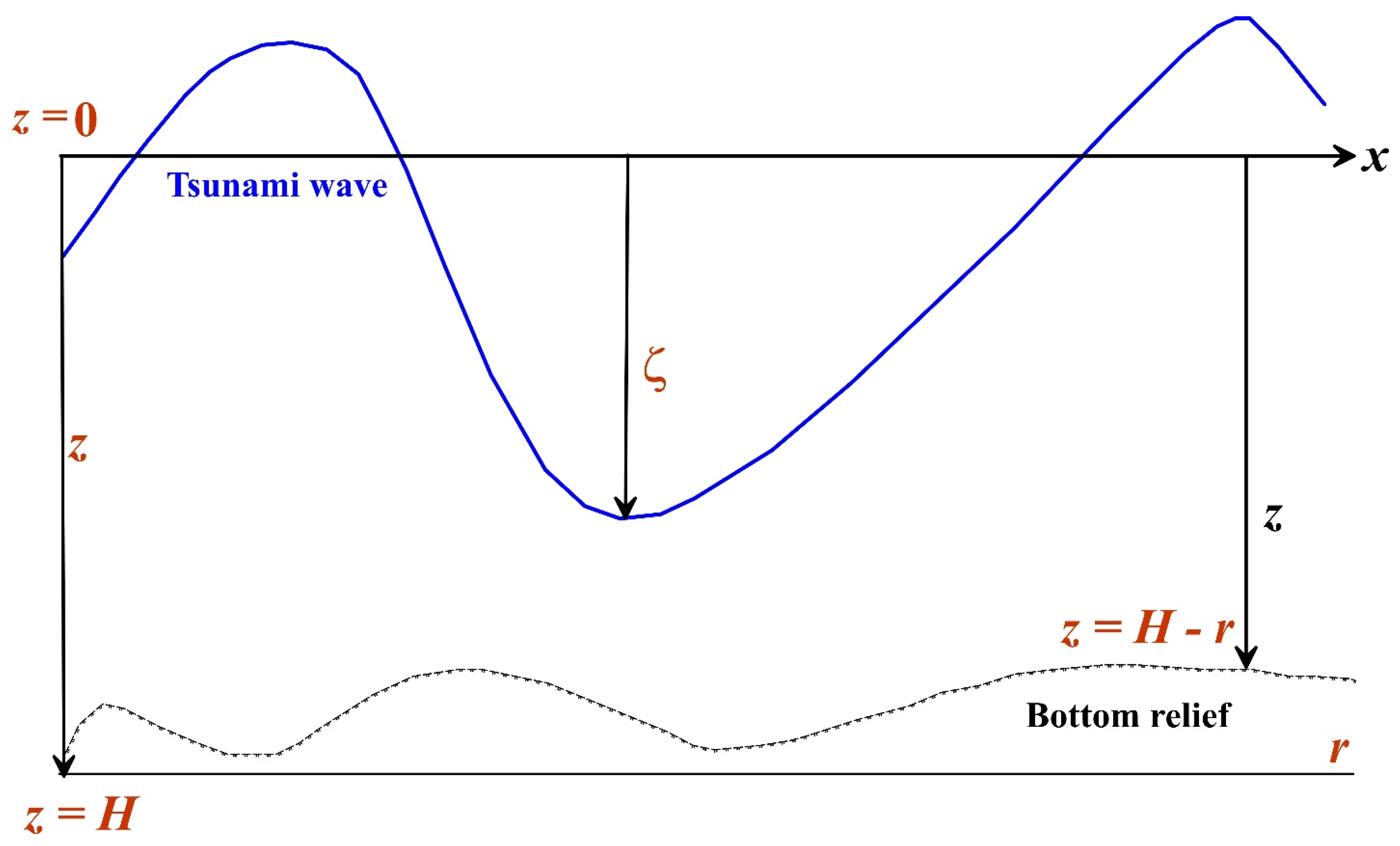
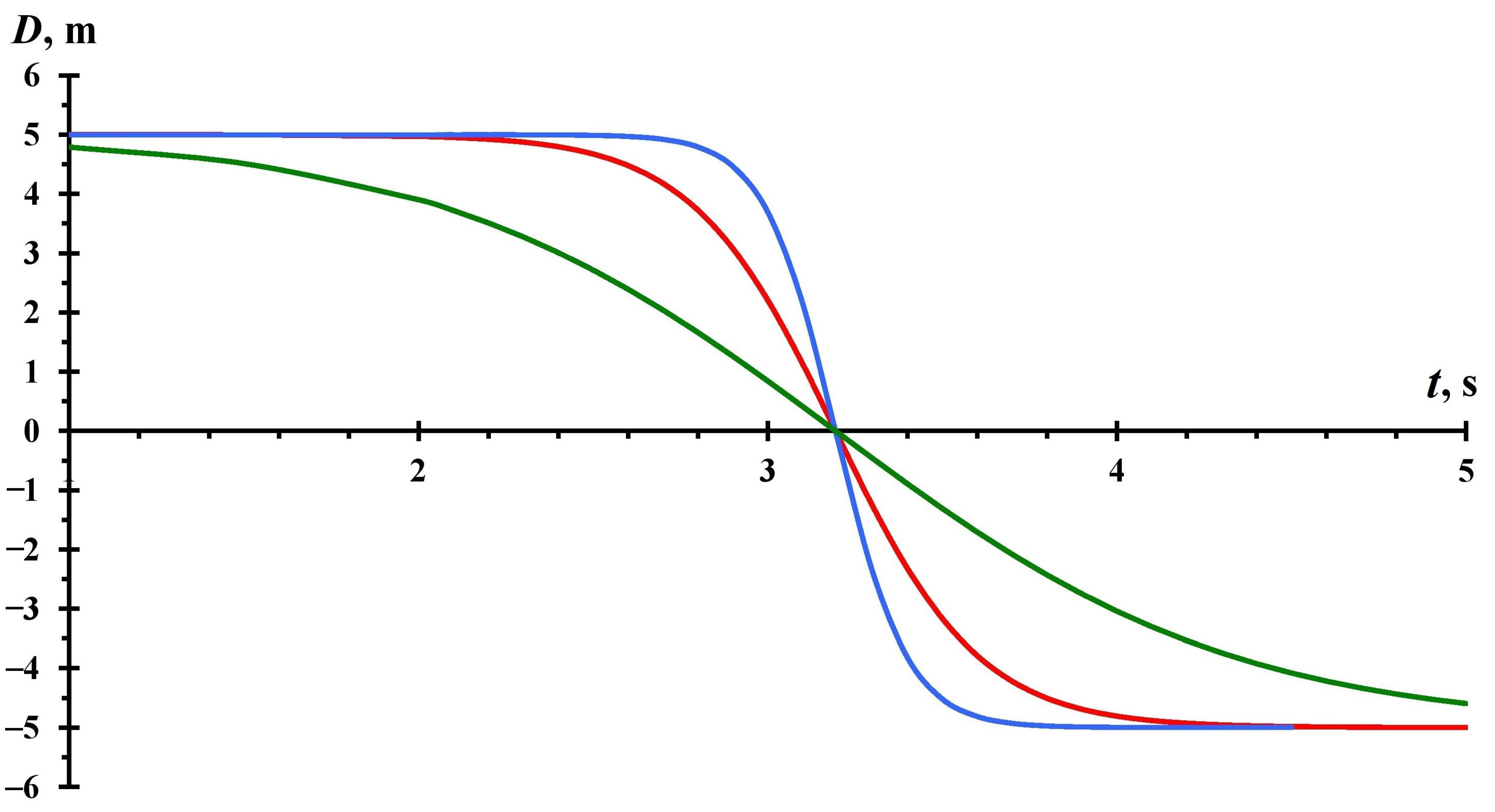
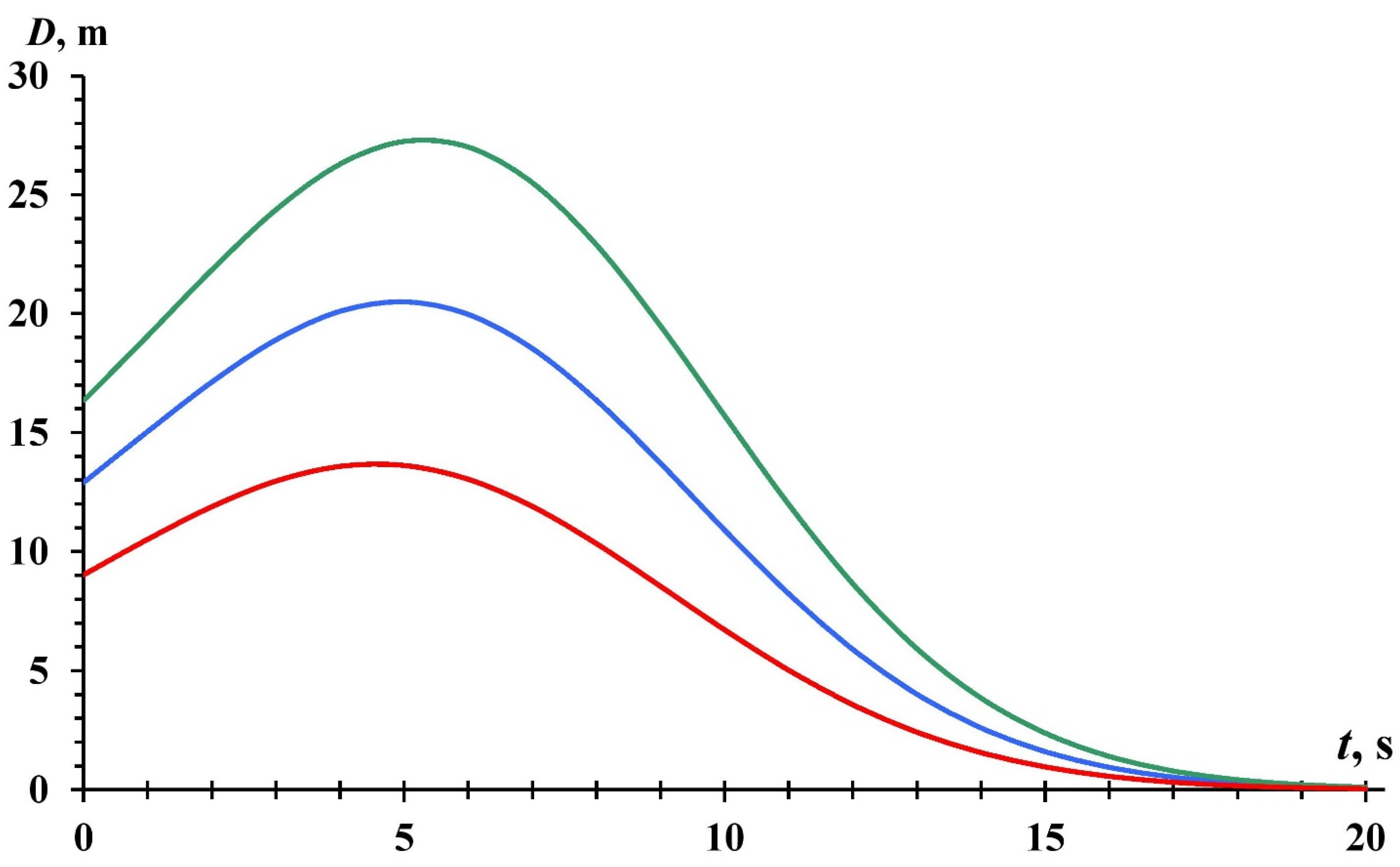
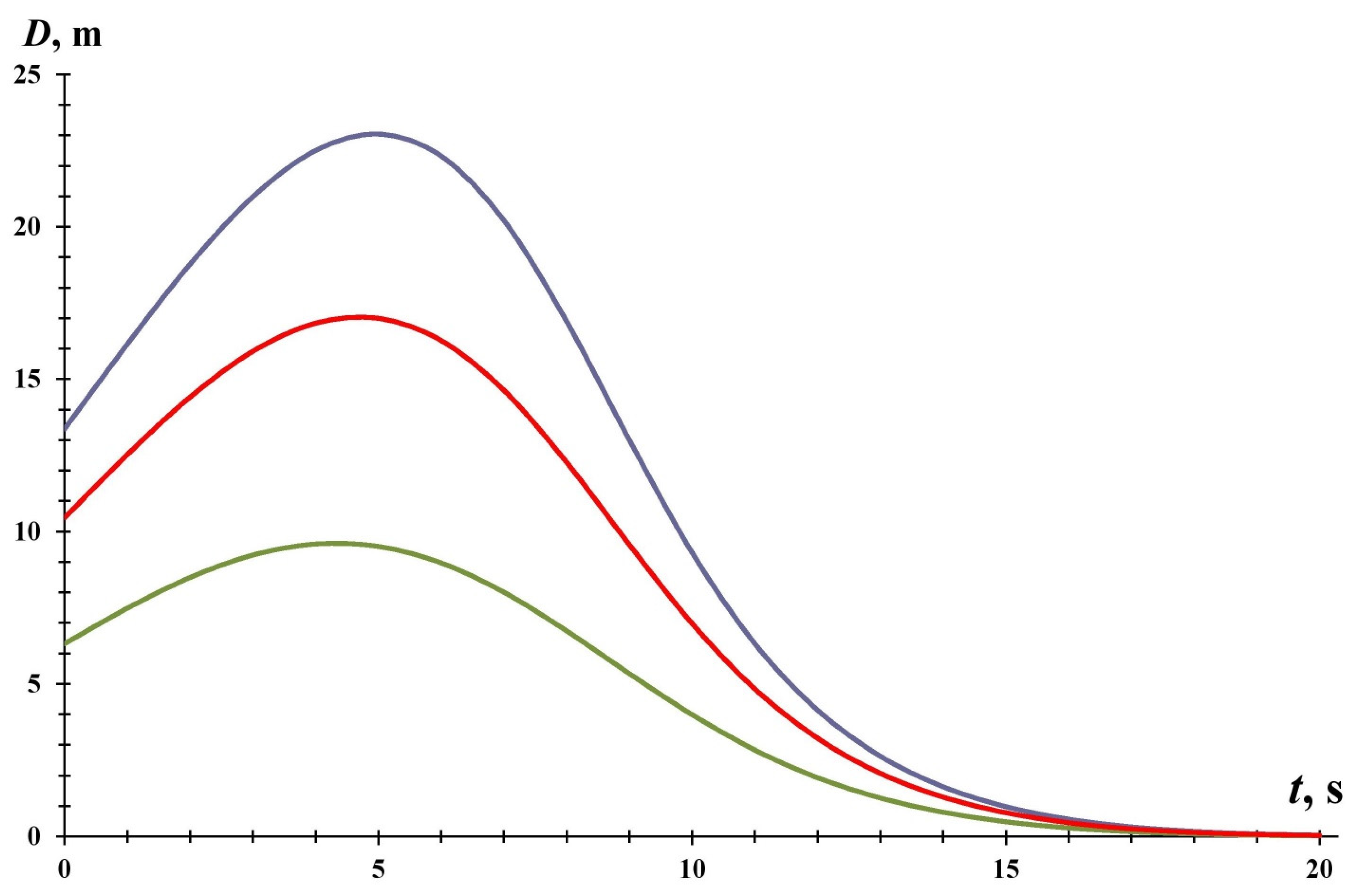

Disclaimer/Publisher’s Note: The statements, opinions and data contained in all publications are solely those of the individual author(s) and contributor(s) and not of MDPI and/or the editor(s). MDPI and/or the editor(s) disclaim responsibility for any injury to people or property resulting from any ideas, methods, instructions or products referred to in the content. |
© 2023 by the authors. Licensee MDPI, Basel, Switzerland. This article is an open access article distributed under the terms and conditions of the Creative Commons Attribution (CC BY) license (https://creativecommons.org/licenses/by/4.0/).
Share and Cite
Arsen’yev, S.A.; Eppelbaum, L.V. The Behavior of Nonlinear Tsunami Waves Running on the Shelf. Appl. Sci. 2023, 13, 8112. https://doi.org/10.3390/app13148112
Arsen’yev SA, Eppelbaum LV. The Behavior of Nonlinear Tsunami Waves Running on the Shelf. Applied Sciences. 2023; 13(14):8112. https://doi.org/10.3390/app13148112
Chicago/Turabian StyleArsen’yev, Sergey A., and Lev V. Eppelbaum. 2023. "The Behavior of Nonlinear Tsunami Waves Running on the Shelf" Applied Sciences 13, no. 14: 8112. https://doi.org/10.3390/app13148112
APA StyleArsen’yev, S. A., & Eppelbaum, L. V. (2023). The Behavior of Nonlinear Tsunami Waves Running on the Shelf. Applied Sciences, 13(14), 8112. https://doi.org/10.3390/app13148112






